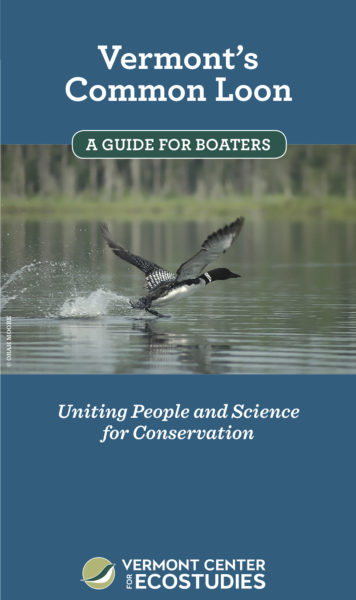Share the Water

To learn more, click on the image to download our handy Guide for Boaters, and share with others, too.
Respect: Enjoy loons from a distance through binoculars. When paddling, never pursue loons for a photo or a closer look. A loon constantly swimming away from you is a stressed loon.
Avoid Nesting Areas: Not all nest sites are signed. Be aware of potential nests in marshes and on islands; be ready to paddle slowly away from a loon sitting on shore. If a loon leaves its nest, depart the area immediately; the loon will return once it feels safe.
Slow Down: Loon chicks can be difficult to see. If boating at high speeds, note where the loon family is and avoid that area. Please observe the “no wake speed” law within 200 feet of shorelines. Wakes from boats can flood shoreline nests and dislodge eggs, while speeding boats have been known to run over loons, injuring or killing them.
Get the Lead Out: Fish responsibly. Loons, like many birds, ingest small pebbles in order to help digest their food. Unfortunately, if the material they collect contains lead from sinkers or jigs, poisoning and death may result.
Reel In When Loons are Diving Nearby: Loons will take live bait and lures. Nearly 50% of loon deaths are caused by ingesting lead fishing gear or injury from fishing line entanglement and hooks.
Take Action: It is against the Federal Migratory Bird Treaty Act to harass migratory birds in the U.S. Please report any loon harassment to your local game warden or state police.
Plant Native Vegetation: If you own shoreline, let your lawn grow wild to create wildlife habitat. Leave woody debris and underwater plants for aquatic insects, fish, and loons. If you need a mowed area, keep it 15-20 feet from shore.
Enjoy: Vermont’s lakes and ponds can be home to both people and loons, if we treat them with respect and are good stewards of forested shorelines and underwater habitat.
